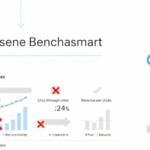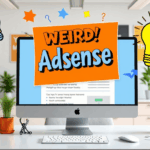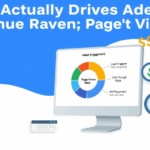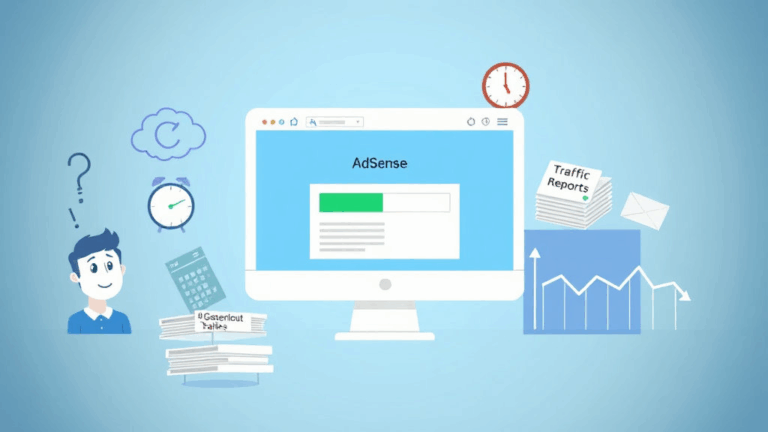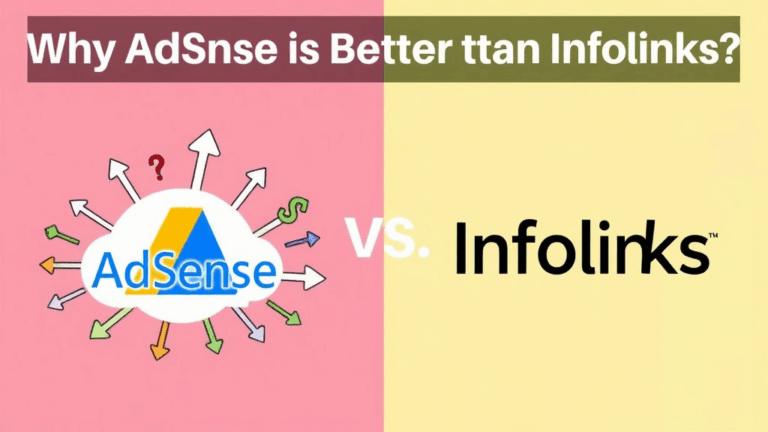AdSense CPC Optimization Tactics That Actually Shift Revenue
Ad Units That Tank CPC and You Don’t Notice
If you’re running multiple ad unit types across pages — especially sticky anchors and vignette formats — you’ve probably already made CPC mistakes you haven’t caught yet. There’s something subtly toxic about Auto Ads deciding when and what to fire, especially on slower sites. I had a page with heavy user intent (comparison charts) crushed by a dropdown menu ad that looked great, scored decent RPM… but reliably delivered garbage-tier clicks.
Remember: not all interactions are the same. Vignettes get impressions, not thoughtful clicks. Especially bad on mobile-heavy categories like cooking or fan fiction blogs (don’t ask). Once I disabled vignette and anchor formats entirely across one of these foot traffic sites, the per-click value jumped by like… well, let’s just say it made me mad I didn’t catch it sooner.
Why Manual Ad Placement Still Beats Auto Ads in CPC Consistency
Auto Ads are great for lazy scaling, and I use them on placeholder subsites. But if you’re actually optimizing CPC, they respond too slowly to changes. I had a niche investing tools dashboard that got traffic spikes after certain stock market events. If an ad rendered in a low-heat area during that spike window, it was wasted. Auto Ads wouldn’t adjust fast enough to surface better-performing units.
When I moved back to manual placements using HTML blocks (and positioned them in click-paths alongside relevant widgets), CPC jumped and actually stabilized. I also had way fewer impressions needed before seeing decent daily revenue. Better ratio overall. Pro tip: use scroll-depth and event-based triggers for visibility — especially for articles over 1000 words long.
Blocking Low-Paying and MFA Categories Actually Works — But Only If You Monitor It
You ever open the AdSense category blocking tool and go, “Sure, I’ll block all of these janky sectors” — then never touch it again?
I did that. Then got curious why compounded quarterly CPC was slipping. Turns out I’d blocked too many mid-value categories just to avoid a few spammy-looking offers. What I learned: instead of full blanket category blocks, monitor what’s being served with the Ad Review Center at least every two weeks. Some display ads pay great even if they look like noise. Also, MFA (Made for AdSense) site ads can throttle your average if you don’t watch for them.
Quick category management tips:
- Enable full sensitive category filtering only if you know your audience demands it (e.g. kids content)
- Regularly check Ad Review Center → Top Ad Impressions vs CPC by category
- Do an export each quarter and look for dormant categories still burning impressions
Why Language and Geo Combinations Wreck CPC When Ignored
Here’s an underrated AdSense kill-switch: English site content, global reach, mixed traffic intent — and zero attention paid to geographic ad value. If your visitors are 60% from Southeast Asia but every post targets US-based affiliate triggers, your CPC is toast without even realizing it.
I had one WordPress blog where users from India were clicking on payday loan ads that only converted for US IPs. Result? A weird dip in CPC combined with bizarrely high CTR… which should’ve been a red flag, but wasn’t until I saw the IP breakdown in Analytics. Worked around it by:
- Splitting article templates by region
- Setting up Cloudflare geolocation headers and swapping ad units via JS
- Adding a fallback message block where high-CPC ads don’t deliver due to region
Undocumented behavior: some advertisers drop CTR-weighted pricing _only_ for specific countries (even with the same keyword structure). You only notice if you log the dynamic pricing for ad requests over a month. It’s ridiculous.
Subtle Ad Code Differences I Didn’t Know Mattered
One of the dumbest things I learned by accident: copy-pasting ad unit code from an existing unit sometimes doesn’t replicate the exact behavior. Especially for responsive display banners.
Here’s what happened — I was migrating a site theme and manually reinserted ad codes into sidebar widgets. I used VS Code to just grab old snippets from an HTML dump. Ads loaded fine, but CPC dropped for weeks. Turns out one of the snippets was missing the newer data-ad-format="auto" and ad style wrappers that Google uses to optimize layout dynamically.
Once I re-pasted fresh code from the actual AdSense panel instead of my notes, CPC ticked back up. Why isn’t this more clearly documented?
Page Speed’s Weirdly Delayed Impact on CPC
This still bugs me. You can pass Core Web Vitals on a page, and yet your CPC can still act like you’re serving sludge. Turns out, Google estimates interactivity from non-scored metrics too — network congestion, inconsistent asset loading across sessions, ad container jank, etc.
There was a two-week gap where one of my oldest domains with awful Lighthouse scores mysteriously started earning better CPC than my clean containerized setup. Why? Because the crappy site didn’t delay ad rendering with live JS modules. I swapped one fast-loading React component for a hydrated iframe — and the site with the iframe got better click rates. Seriously.
“Ad loading speed influences user interaction window — not tracked but inferred via engagement model.”
That’s from a Google Ads support thread I had to dig for. It shouldn’t be buried like that.
Domain Reputation Bleed-Over Is Real
I used to think all subdomains were somewhat insulated on major publishers. Nope. I spun up a new content project on a subdomain of a blog that used to run programmatic junk a few years ago. Perfectly clean install, indexed instantly, healthy Analytics. CPC? Miserable. Like sub-one-cent clicks for extremely valuable keywords.
I moved the entire setup to a new root domain (same content structure) and within days CPC doubled. It felt personal. Best guess is that Google’s internal domain scoring persists across subdomains unless you have incredibly high traffic on the new setup to reset behavior.
Stuff I now do when registering new domains:
- Check Internet Archive snapshots going back 5–10 years
- Run bulk WHOIS history lookups (catch dropped domains with bad histories)
- Do early impressions testing before scaling traffic to confirm ad sourcing
Ads.txt Fixes That Quietly Kick In Later Than You Think
I thought updating ads.txt was straightforward: upload file, ping support, done. But apparently, some buyers don’t rebid promptly.
One site’s CPC randomly dropped after I added a new ad network entry to the file. I figured it was a bad actor, so I nuked that vendor 24 hours later. CPC didn’t recover for another full five days. Later, an ad rep told me some buyers cache ads.txt maps for up to a week (even if ISPs update DNS faster). So your changes do work — just not on your schedule.
Weird quirk: I included a trailing blank line in one version of my ads.txt and some crawler logs flagged it as malformed. Didn’t surface as an error in AdSense, but CPC dipped that week. Coincidence? Not totally sure. But I remove trailing newlines now.
Interstitial Overload from Third-Party Scripts
This one’s embarrassing. I added a script from a content rec system (you’ve heard of them) and didn’t check the mobile render carefully. Turns out it injected an interstitial that ran between pages — even though I had AdSense interstitials disabled.
CPC dropped. CTR looked ok. But bounce shot up and long-session revenue collapsed. Apparently, Google punished the page quality signal, even though the interstitial wasn’t technically from them. Once I nuked the script, CPC on mobile visitors went back to something sane. Guess they treat all interstitials as suspect if it wrecks load priority.
I don’t let anything insert between client-side router transitions anymore unless it’s my own code.
More Reliable Than CPC: Ad Click Position Logs
I started logging click coordinates into a heatmap overlay just to debug user behavior — turns out it’s extremely good at diagnosing CPC issues too. You start noticing things like:
- High CTR but all clicks landing 5px into the container = accidental tap
- Low CDN regions correlating to less efficient render, and therefore worse CPC
- Ad units visible in heatmaps but never clicked = ad blindness from proximity to UI junk
This kind of thing caught a bug where my Table of Contents plugin was pushing the main ad unit below the fold on iPhones, even though the theme breakpoints showed it rendering correctly. Only when I saw 0 click heat in that zone did I even think to test in low zoom mode.
If there’s one aha pattern: start tracking heat per topic cluster. You’ll spot categories where CPC tanks way before AdSense ever shows a warning.


